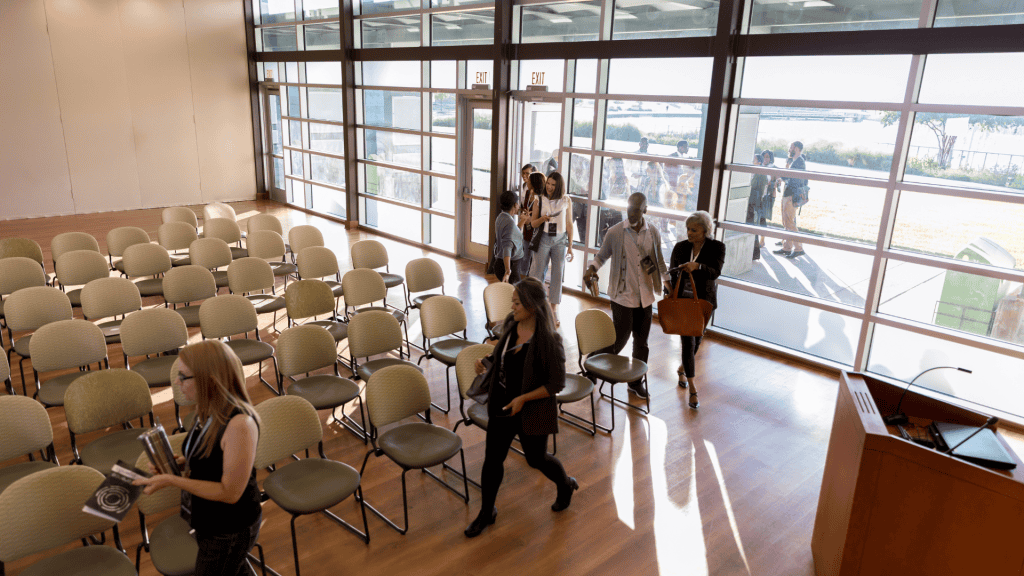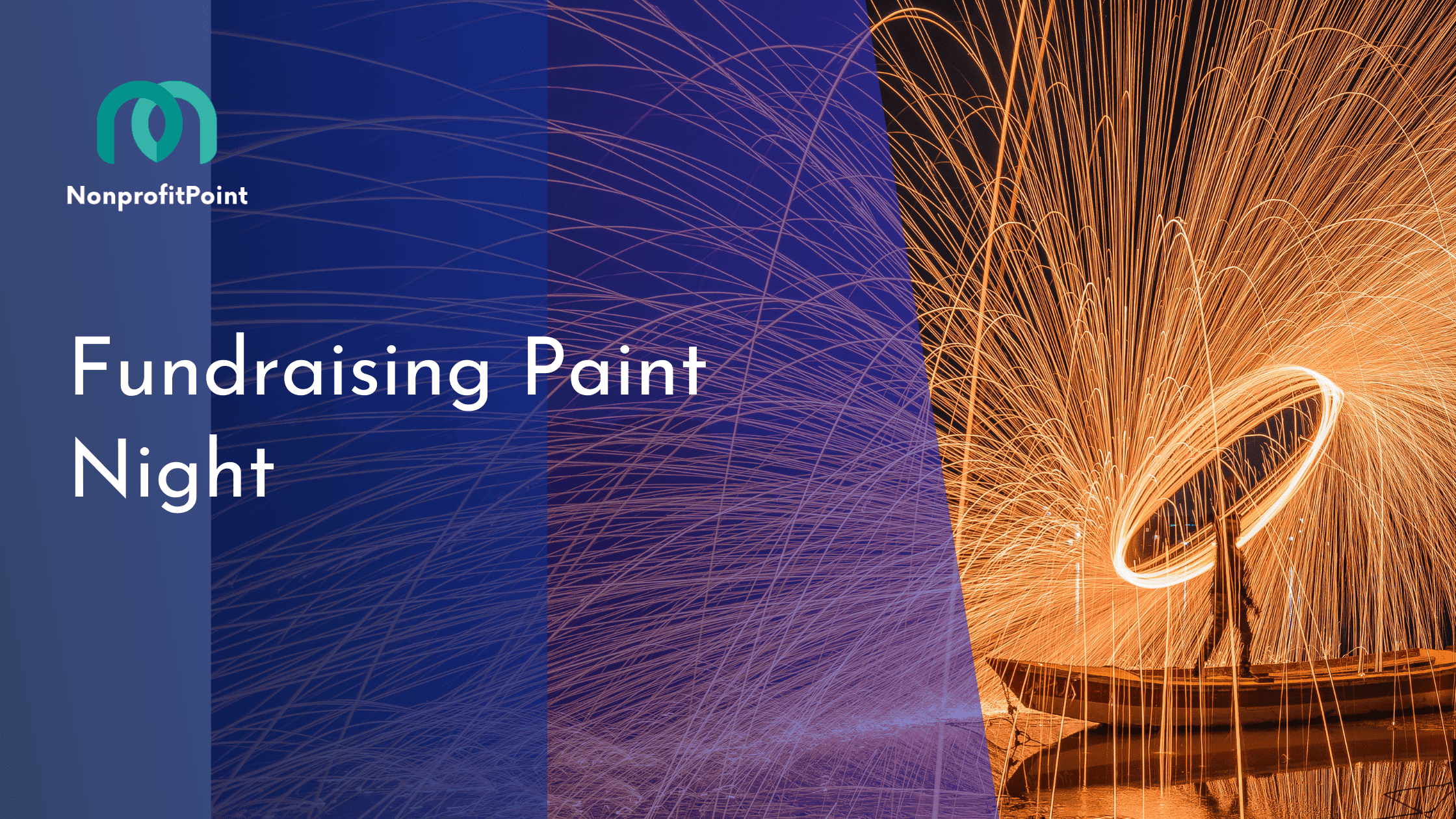How to Organize a Fundraising Paint Night (Step by Step) | With Tips
Imagine the sun setting on a warm summer evening, the air buzzing with laughter and chatter, with hands of all ages reaching out to mix colors on their palettes, painting brushes dancing rhythmically on canvases, and the spirit of generosity embracing the crowd. Welcome to the magical experience of a “Fundraising Paint Night”, a unique event where artistry intersects philanthropy, creating an avenue where each stroke of paint serves a dual purpose— to unleash your creative prowess and to contribute to a greater cause. These nights not only give birth to wonderful art pieces but also aid in fostering communities, connecting individuals, and promoting benevolence, all while providing a fun-filled escape from our everyday routines.
Why should you keep reading, you ask? Picture this— by the end of this blog post, you’ll be equipped with all the knowledge needed to organize your very own Fundraising Paint Night, or participate in one with confidence and enthusiasm. Whether you’re an artist looking to utilize your passion for a noble cause, a philanthropist wanting to add a splash of color to your charitable activities, or simply someone seeking a lively social event with a charitable twist, this post is your canvas. Allow us to provide the colors, to help you paint a vibrant picture of fundraising, creativity, community, and fun. Now, grab your brush (or your mouse), let’s embark on this fascinating journey together!
Here’s a step by step guide on organizing a fundraising paint night:
Step 1: Identify the Cause

The heart of any fundraising event lies in the cause it supports, and this is particularly true for a Fundraising Paint Night. The cause you choose provides a meaningful context for your event and gives participants a clear understanding of why their contributions are valuable. This could range from supporting local community initiatives, schools, and hospitals, to funding research for global causes such as climate change, health issues, or poverty reduction.
If possible, choose a cause that resonates with your potential audience and aligns with their interests. In some cases, the cause may also dictate the theme of your paint night. It’s important to clearly communicate where the funds are going to instill trust and show transparency in your efforts.
Step 2: Set a Goal

Having a well-defined goal is crucial in the planning process of your Fundraising Paint Night. This goal should reflect the amount of money you intend to raise through the event. It can be a fixed figure or may be project-related, like funding an art program in a school, supporting a specific number of individuals, or even building a community center.
Setting this goal not only provides you with a clear target to aim for but also gives participants a tangible understanding of how their contributions will make a difference. Be realistic yet ambitious with your goal, and don’t forget to communicate it effectively throughout your promotion efforts.
Step 3: Venue and Date

The venue plays a significant role in setting the tone of the event. Your choice of venue can depend on your budget, the number of participants, and the ambiance you want to create. Ideally, it should have enough space for attendees to paint comfortably and mingle with others. This could be a community hall, a spacious cafe, an art studio, or even a park, weather permitting.
When choosing a date and time, consider the schedules of your target audience. Weekends or weekday evenings often work well as they allow people who work or study during the day to attend. The date should also be set far enough in the future to allow ample time for planning and promotion.
Step 4: Gather Supplies
Ensuring you have the right art supplies is key to the success of your Fundraising Paint Night. Depending on the complexity of the artwork, you may need different types of paint (usually acrylic works well), a variety of brushes, canvases, palettes for mixing colors, water jars for cleaning brushes, and easels to hold the canvases. If you want to protect your venue and participants’ clothes, you might also consider getting aprons or smocks.
These supplies can often be purchased in bulk at discounted prices. Alternatively, you can approach local art supply stores for sponsorships or discounts in exchange for brand visibility during your event. Remember to have a few extra supplies on hand in case of last-minute attendees or mishaps.
Step 5: Find an Instructor

A fundamental component of a successful Fundraising Paint Night is an engaging and knowledgeable instructor. This person doesn’t necessarily need to be a professional artist, but they should be comfortable with painting and able to guide participants of various skill levels through the creation of an artwork. They should be able to create an enjoyable atmosphere, fostering creativity, and ensuring everyone feels included and capable, regardless of their artistic abilities.
If hiring a professional artist or art teacher isn’t an option, consider seeking volunteers from local art schools or community centers. Alternatively, you can follow along with an online painting tutorial, projected onto a screen for all attendees to see.
Step 6: Ticketing
Setting the ticket price requires a fine balance. It should be high enough to cover your costs and contribute to your fundraising goal but also affordable enough to not deter potential attendees. Take into consideration the cost of the venue, supplies, food and drinks, and any fees for your instructor.
Then, add on a reasonable amount that will go directly towards your cause. Once you’ve determined the price, set up a straightforward and user-friendly system for selling tickets, whether online or at local businesses. Consider early bird prices or group discounts to encourage early bookings and higher turnout.
Step 7: Promote the Event
Promoting your Fundraising Paint Night effectively can be the difference between a good event and a great one. Utilize various channels to reach your potential audience. Social media platforms, such as Facebook, Instagram, or LinkedIn, can be powerful tools for event promotion, especially when combined with eye-catching graphics and regular updates.
Consider creating a unique hashtag for your event to increase its visibility. Local press, community bulletin boards, newsletters, and word-of-mouth are also valuable ways to spread the word. Highlight the unique aspects of your event—the art, the social interaction, the cause—to appeal to a wide range of interests.
Step 8: Organize Food and Drinks
Depending on your budget and the nature of your event, you may want to provide refreshments. Food and drinks can add an element of sociability and comfort to your event, encouraging attendees to mingle and stay longer. If your venue permits, consider a cash bar or a wine and cheese setup to pair with the painting activity. Alternatively, simple snacks and non-alcoholic beverages could also work.
These could either be included in the ticket price or sold separately, with proceeds adding to your fundraising efforts. Ensure to comply with any food and beverage regulations applicable to your venue or area.
Step 9: Set Up
On the day of the event, arrive early to ensure everything is set up well in advance. Consider the layout of the venue and the flow of the event. Arrange the tables and chairs in a manner that encourages interaction, but also gives each participant enough space to paint comfortably. Each painting station should be well-equipped with the necessary art supplies, including a canvas, brushes, paints, a water jar, and a palette.
If possible, have an example of the final artwork on display for attendees to refer to. A registration desk at the entrance is a good idea to welcome guests, distribute tickets or confirm online ticket purchases, and provide any necessary instructions.
Step 10: Enjoy the Night
Once everything is set up and your guests start arriving, it’s time to enjoy the event. Start by welcoming everyone and expressing gratitude for their participation. Introduce the instructor and provide a brief overview of the cause and the goal for the evening. This helps set a positive tone for the night and reminds guests of the purpose of the event.
As the painting session gets underway, circulate around the room, ensuring everyone is comfortable and having a good time. Be available to answer questions, provide assistance, and interact with the participants. The key is to create a friendly, enjoyable atmosphere where everyone feels valued.
Step 11: Follow Up
After the event, it’s important to follow up with the attendees. Send out thank you emails or notes, expressing your appreciation for their participation and contribution. In this communication, provide an update about the total amount raised and how it will be used to benefit the cause. This not only brings closure to the event but also strengthens the bond with the participants, making them more likely to engage in future activities. Don’t forget to also thank any volunteers, artists, and businesses that contributed to the event.
If possible, share pictures of the event and the completed artworks, which can serve as great memories and also as promotional material for future events. Remember, a successful Fundraising Paint Night is not just about the money raised, but also about the community built and the creativity fostered.
Here are some useful tips to make your Fundraising Paint Night a success:
- Choose an Accessible Artwork: The artwork to be painted should be interesting, but not too complicated. Remember, attendees may have varied levels of painting experience, so choose a project that can be accomplished by beginners, yet is interesting enough to keep more advanced painters engaged.
- Team Up with Local Businesses: Collaborate with local businesses for sponsorships or partnerships. They can provide materials, venue, refreshments, or even help promote the event. This can greatly reduce your costs and increase visibility.
- Create a Detailed Schedule: Plan the night’s schedule in detail to keep things running smoothly. This includes the welcome speech, painting instructions, breaks, and the closing remarks. Stick to the schedule as closely as possible to ensure the event doesn’t run overtime.
- Offer Prizes or Awards: Consider offering a prize or award for ‘best painting’, ‘most creative painting’, or even ‘most enthusiastic painter’. This can add an element of friendly competition and fun.
- Utilize Social Media: Use social media platforms to generate excitement about the event. Post updates, teasers of the artwork to be painted, profiles of the instructor or featured artists, or even testimonials from previous participants, if any.
- Provide Clear Communication: From the instructions on how to buy tickets to the event’s purpose and schedule, ensure all communication is clear and straightforward. Make sure all participants understand what they’re contributing to and what they can expect at the event.
- Don’t Forget the Details: Small touches can make a big difference. Music can help set a relaxed and creative mood. Providing name tags encourages socializing. Displaying a progress tracker can motivate guests to help reach the fundraising goal.
- Plan for Cleanup: Painting can be messy, so have a plan for cleanup. This could include providing wipes for minor spills, lining tables with disposable covers for easy cleanup, and having a designated area for disposing of used materials.
- Encourage Sharing: Encourage attendees to share their experience and their finished artwork on social media. This not only provides them with a sense of pride and accomplishment but can also serve as promotion for future events.
- Stay Positive and Flexible: Not everything might go as planned, and that’s okay. Stay positive, adapt as needed, and keep the focus on the fun of painting and the importance of the cause.
Remember, the primary goals are to raise funds for your cause, provide an enjoyable experience for attendees, and hopefully, inspire a love of painting and community spirit.
Final Thoughts
As we bring our colors back to their palettes and clean our brushes, it’s time to step back and appreciate the larger canvas. A Fundraising Paint Night isn’t just an event—it’s a testament to the power of community, creativity, and charity merging into one inspiring evening. Each stroke of paint is more than just color on canvas; it’s a symbol of generosity, a token of empathy, and a sign that art and altruism can go hand in hand.
Perhaps the most beautiful thing about a Fundraising Paint Night is the fact that everyone leaves with something valuable. Attendees walk away with a unique piece of artwork and the satisfaction of contributing to a meaningful cause. The cause receives funds that can bring about change and betterment. The community grows stronger, connected by the collective experience of creativity and generosity.
As we wrap up this post, remember this: The vibrant hues that filled our evening are akin to the diverse ways we can give back to our society. Each one of us has a unique color to contribute, a distinctive strength we can bring to the palette of life. By combining these colors, by pooling our strengths, we can create a masterpiece of change, a spectrum of possibilities. So, next time you dip your brush into a color, ask yourself: What color will I bring to the world, and how can it paint a brighter future for us all?
It’s the harmony of individual colors that creates an unforgettable artwork, just as it is the unity of individual efforts that leads to impactful change. On that thought-provoking note, we conclude our guide to organizing a Fundraising Paint Night. Here’s to creating art, fostering communities, and making a difference—one paint stroke at a time.




![How to Ask Friends for Donation (Step-by-Step) [+3 Examples]](https://nonprofitpoint.com/wp-content/uploads/2023/03/How-to-ask-friends-for-donations-min-768x432.png)

